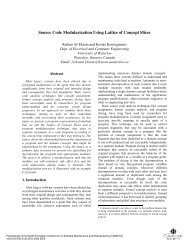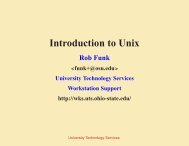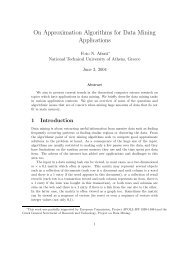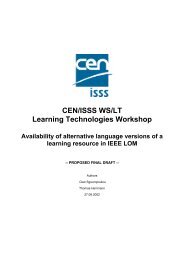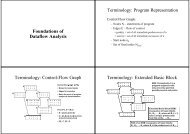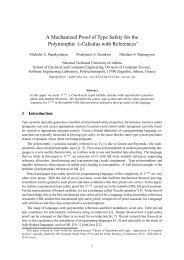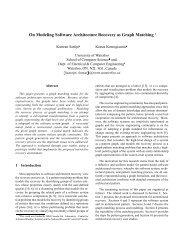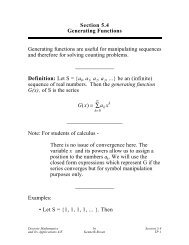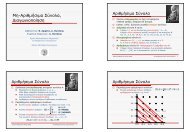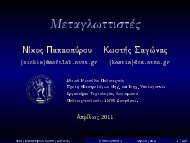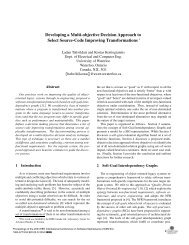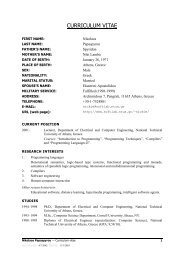Manual
Manual
Manual
Create successful ePaper yourself
Turn your PDF publications into a flip-book with our unique Google optimized e-Paper software.
46 Bison 2.3<br />
stack before the rule can be applied even once. See Chapter 5 [The Bison Parser Algorithm],<br />
page 71, for further explanation of this.<br />
Indirect or mutual recursion occurs when the result of the rule does not appear directly<br />
on its right hand side, but does appear in rules for other nonterminals which do appear on<br />
its right hand side.<br />
For example:<br />
expr:<br />
primary<br />
| primary ’+’ primary<br />
;<br />
primary: constant<br />
| ’(’ expr ’)’<br />
;<br />
defines two mutually-recursive nonterminals, since each refers to the other.<br />
3.5 Defining Language Semantics<br />
The grammar rules for a language determine only the syntax. The semantics are determined<br />
by the semantic values associated with various tokens and groupings, and by the actions<br />
taken when various groupings are recognized.<br />
For example, the calculator calculates properly because the value associated with each<br />
expression is the proper number; it adds properly because the action for the grouping ‘x + y’<br />
is to add the numbers associated with x and y.<br />
3.5.1 Data Types of Semantic Values<br />
In a simple program it may be sufficient to use the same data type for the semantic values<br />
of all language constructs. This was true in the RPN and infix calculator examples (see<br />
Section 2.1 [Reverse Polish Notation Calculator], page 23).<br />
Bison’s default is to use type int for all semantic values. To specify some other type,<br />
define YYSTYPE as a macro, like this:<br />
#define YYSTYPE double<br />
YYSTYPE’s replacement list should be a type name that does not contain parentheses or<br />
square brackets. This macro definition must go in the prologue of the grammar file (see<br />
Section 3.1 [Outline of a Bison Grammar], page 41).<br />
3.5.2 More Than One Value Type<br />
In most programs, you will need different data types for different kinds of tokens and<br />
groupings. For example, a numeric constant may need type int or long int, while a string<br />
constant needs type char *, and an identifier might need a pointer to an entry in the symbol<br />
table.<br />
To use more than one data type for semantic values in one parser, Bison requires you to<br />
do two things:<br />
• Specify the entire collection of possible data types, with the %union Bison declaration<br />
(see Section 3.7.4 [The Collection of Value Types], page 55).



